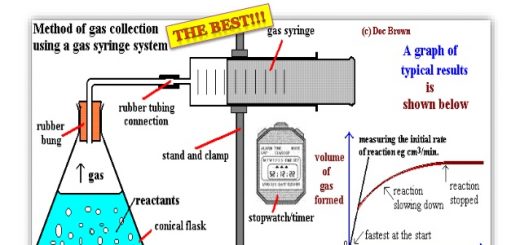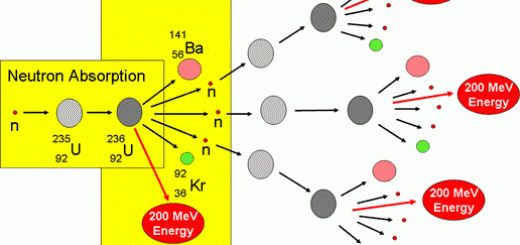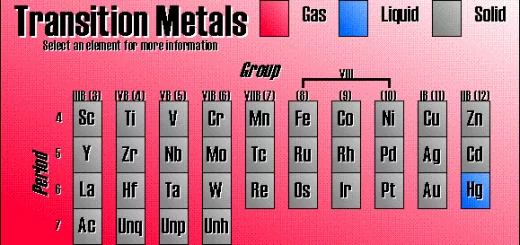Water properties, structure, pollutants and protection of water from pollution
Water has the ability to dissolve most ionic compounds because water is a good polar solvent. The high boiling point of water due to the presence of hydrogen bonds between water molecules. The presence of hydrogen bonds between water molecules due to the higher electronegativity of oxygen compared with hydrogen.
Water
Water is very important for the survival of all living organisms and it has several uses in Agricultural fields, Industrial fields, and Personal fields.
Structure of water
Formation of polar water molecules
A water molecule is formed of one oxygen atom (O) with two hydrogen atoms (2H) joined together by two single covalent bonds, the angle between them is 104.5°.
Bonds between the water molecule
Between polar water molecules originate a type of weak electrostatic attraction known as hydrogen bond due to the higher electronegativity of oxygen compared with hydrogen.
The hydrogen bond is a type of weak electrostatic attraction that originates between the molecules of some polar compounds. Hydrogen bonds between water molecules are weaker than covalent bonds between the atoms in the same molecules. However, hydrogen bonds are considered to the most important factors which are responsible for the abnormality of water properties.
Properties of water
Physical properties
- It exists in three states.
- It is a good polar solvent
- Rising of its boiling and its freezing points
- Its density decreases on freezing.
Chemical properties
- It has a neutral effect on both litmus papers
- Electrolysis of water.
Physical properties of water
Water exists in three states: Water is a unique matter due to its existence in three states at the ordinary temperature which are: Solid-state = Ice. Liquid state = Water. Gaseous state = Water vapour.
Water is a good polar solvent: Fill three beakers with equal amounts of water. Put a spoon of table sugar in the first beaker, a spoon of table salt in the second, and some drops of food oil in the third with stirring, so, you will notice that both sugar and table salt dissolve in water while oil doesn’t dissolve.
Most covalent compounds as oil cannot dissolve in water as it cannot form hydrogen bonds with water. Water is a good solvent for most ionic compounds (such as sodium chloride [table salt], and some covalent compounds (such as sugar), which can form hydrogen bonds with water.
Table salt dissolves in water because water is a good polar solvent for most ionic compounds (as table salt). Sugar dissolves in water although it is among covalent compounds because sugar molecules form hydrogen bonds with water molecules. Oil doesn’t dissolve in water because it is a covalent compound that cannot form hydrogen bonds with water, so it doesn’t dissolve in it.
Rising of water boiling point and its freezing point: It was supposed that: The boiling point of water is less than (100°C), the freezing point of water is less than (0°C) but in the normal atmospheric pressure. Pure water boils at (100°C), and it freezes at (0°C), this is due to the presence of hydrogen bonds between its molecules.
Water density decreases on freezing: Water is not like other matters. where its density in the solid-state (ice) is lower than its density in the liquid state (water) because when the temperature of the water becomes less than 4°C, water molecules are collected together by hydrogen bonds forming large-sized hexagonal ice crystals with many spaces between them, so its volume increases and thus its density.
The highest value of density of pure water at 4°C. The lowest value of the density of pure water at 0°C. Ice floats on the water surface because the density of ice is less than the density of water. The density of salty water is larger than that of fresh water, so swimming in the sea is easier than swimming in swimming pools.
Although the water of oceans freezes at polar zones, the aquatic creatures are still alive, due to the formation of a layer of ice on the surface of liquid water protects the deep water from freezing which preserves the life of the marine organisms in it. On putting a glass bottle filled with water in a freezer, it breaks (explodes) because when water freezes its volume increases.
It is possible to dissolve the ice of the freezer quickly after disconnecting the electric current from the fridge in two ways: Putting a hot water container in the freezer and close the fridge. or using a hairdryer to direct a hot air current to the formed ice.
Chemical properties of water
Water has a neutral effect on both litmus papers: Put two litmus papers (blue and red) in a basin containing pure water. The colour of the two papers (blue and red) doesn’t change. Pure water has a neutral effect on both litmus papers (blue and red). Pure water doesn’t affect blue and red litmus papers because pure water has a neutral effect on both litmus papers.
Electrolysis of water
- Form an electric circuit of the electrolysis of water.
- Close the circuit for 10 min.
- Approach a glowing splint to the gas formed at both cathode and anode.
- Compare the volume of the evolved gas above the negative pole (cathode) and the volume of the evolved gas above the positive pole (anode).
Observation:
- The evolved gas above the cathode burns with a pop sound, while the evolved gas above the anode makes the glowing splint more glowing.
- The volume of the evolved gas above the cathode is twice the volume of the evolved gas above the anode.
Conclusion:
- Hydrogen gas evolves at the cathode.
- Oxygen gas evolves at the anode.
- The acidified water decomposes by electricity into its two elements (hydrogen and oxygen), the volume of hydrogen gas is twice the volume of oxygen gas at a ratio of 2:1 by volume respectively.
2H2O→ 2H2 ↑ + O2 ↑
The idea of work of Hofmann’s voltameter is used for the electrolysis of acidified water. The relation between the volume of hydrogen gas and oxygen gas on electrolysis of water:
The volume of hydrogen gas at the cathode = 2 × Volume of oxygen gas at the anode
Adding few drops of dilute sulphuric acid (or sodium carbonate) to pure water during its electrolysis by Hofmann’s voltameter, to make water conduct electricity, where the pure water is a bad conductor of electricity.
The glowing of the splint increases by approaching it to the anode of Hofmann’s voltameter during electrolysis of acidified water because oxygen gas evolves at the anode that increases the glowing of the splint.
Water pollution
The continuous increase in agricultural, industrial, and developmental activities leads to water pollution. Water pollution is the addition of any substance to the water which causes a continuous gradual change in water properties affection the health and the life of living creatures.
Water pollutants and their harms
Environmental pollutants are divided generally into two kinds, which are:
- Natural pollutants, Sources: Natural phenomena. Examples: Lightning accompanied by thunderstorms, Death of living organisms, and volcanic eruptions.
- Artificial pollutants, Sources: Different human activities. Examples: The overuse of chemical insecticides and fertilizers, Throwing sewage, factories wastes and leakage of petroleum oil in the seas and rivers, Burning coal and oil, which leads to the formation of acidic rains and smog.
Types of water pollution
Water pollution is classified into 4 main types which are Biological pollution, Chemical pollution, Thermal pollution, and Radiant pollution:
Biological pollution is due to mixing animals and human wastes with water, harms are the infection with many diseases such as bilharzia, typhoid, and hepatitis.
Chemical pollution is due to discharging factories wastes and sewage in seas, rivers, and canals. Harms: the increase in some elements concentration causing great harms as:
- the death of brain cells, When eating continuously fish whose bodies contain a high concentration of lead.
- Blindness: When drinking continuously from water containing a high concentration of mercury.
- Increases the infection rates of liver cancer: When drinking continuously from water containing arsenic.
Thermal pollution is due to rising of the temperature of some marine zone which uses water for cooling the nuclear reactors. Damages: Destroy the marine creatures found in these zones due to the separation of the dissolved oxygen in the water.
Radiant pollution is due to dumping the atomic wastes in oceans and seas, and Leakage of radioactive materials from nuclear reactors, It increases the infection rates of cancer. Nuclear reactors cause both thermal water pollution and radiant water pollution.
Protection of water from pollution
Many behaviours must be taken into consideration to protect water from pollution in Egypt, such as:
- Prevention of getting rid of sewage, wastes of factories, and dead animals in rivers or canals.
- Disinfection of the drinking water tanks which are found on the roofs of buildings periodically.
- Don’t store the tap water in empty plastic bottles, because plastic reacts with chlorine gas (which is used as water disinfectant) Leading to an increase in the infection rates of cancer.
- Spreading environmental awareness among people to protect the water from pollution.
- Developing the station of water purification and doing a periodical analysis to determine the rate of water validity for drinking.
Main Groups in Modern Periodic Table, Alkali metals, Halogens & Inert gases groups



